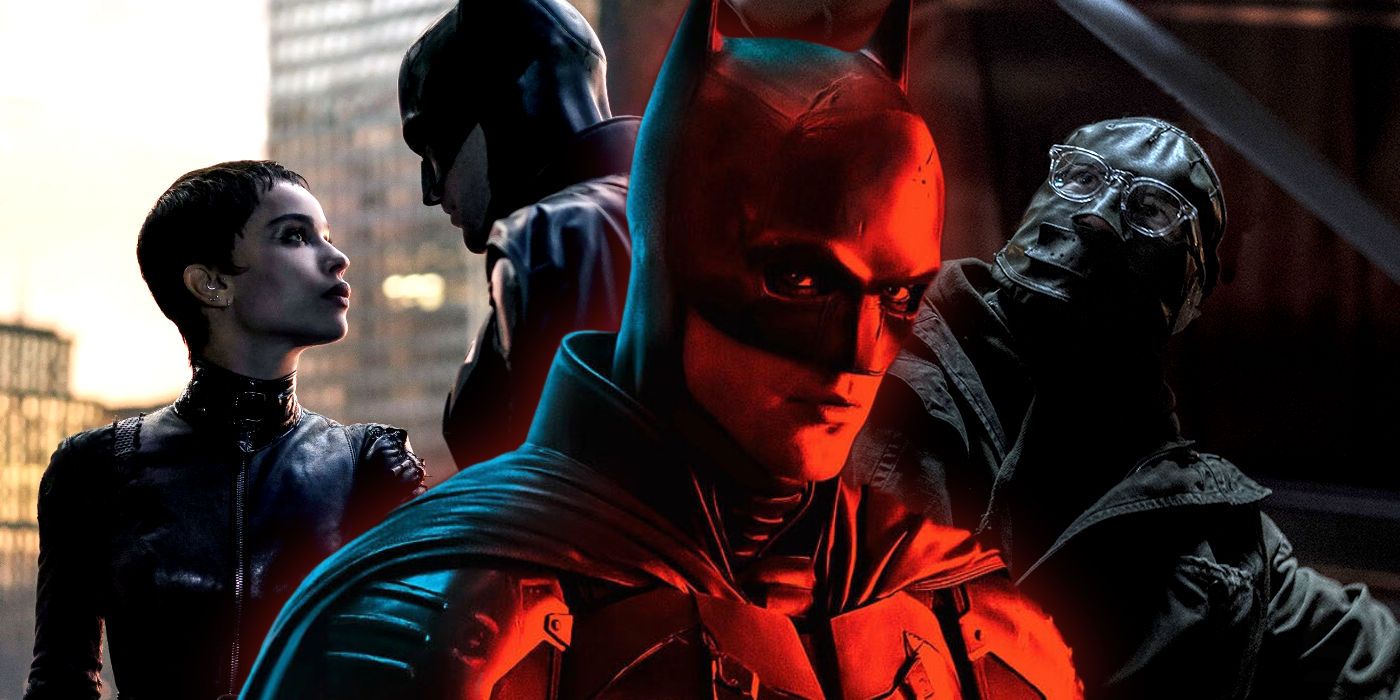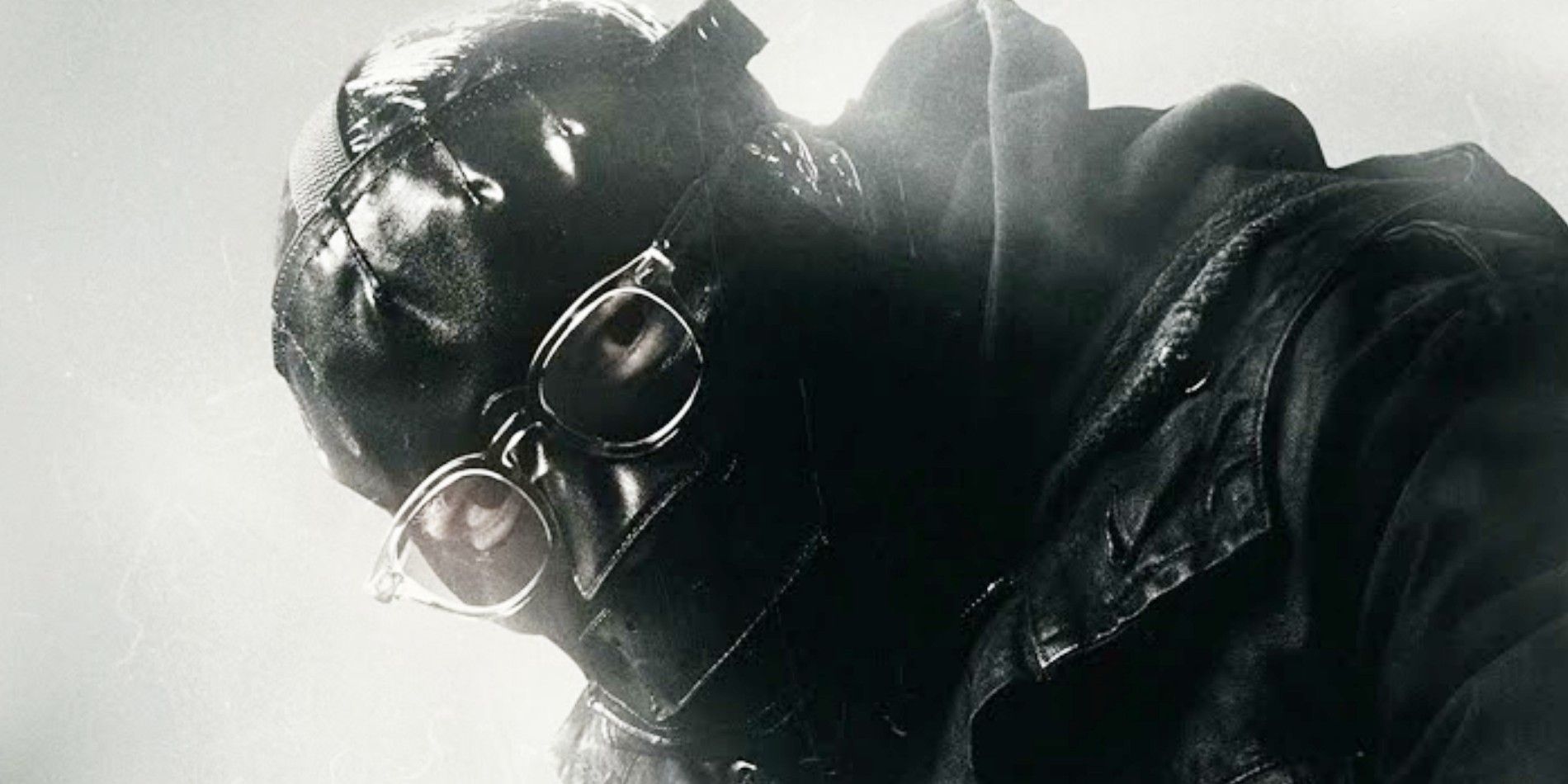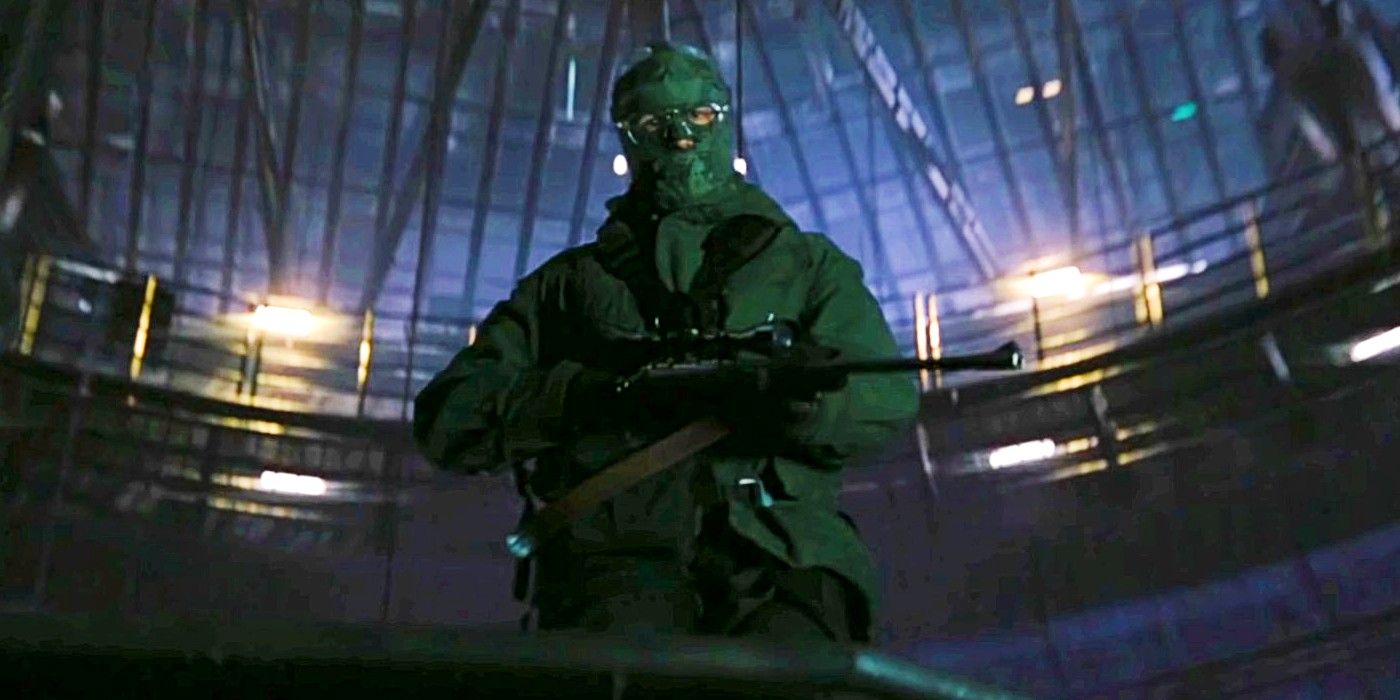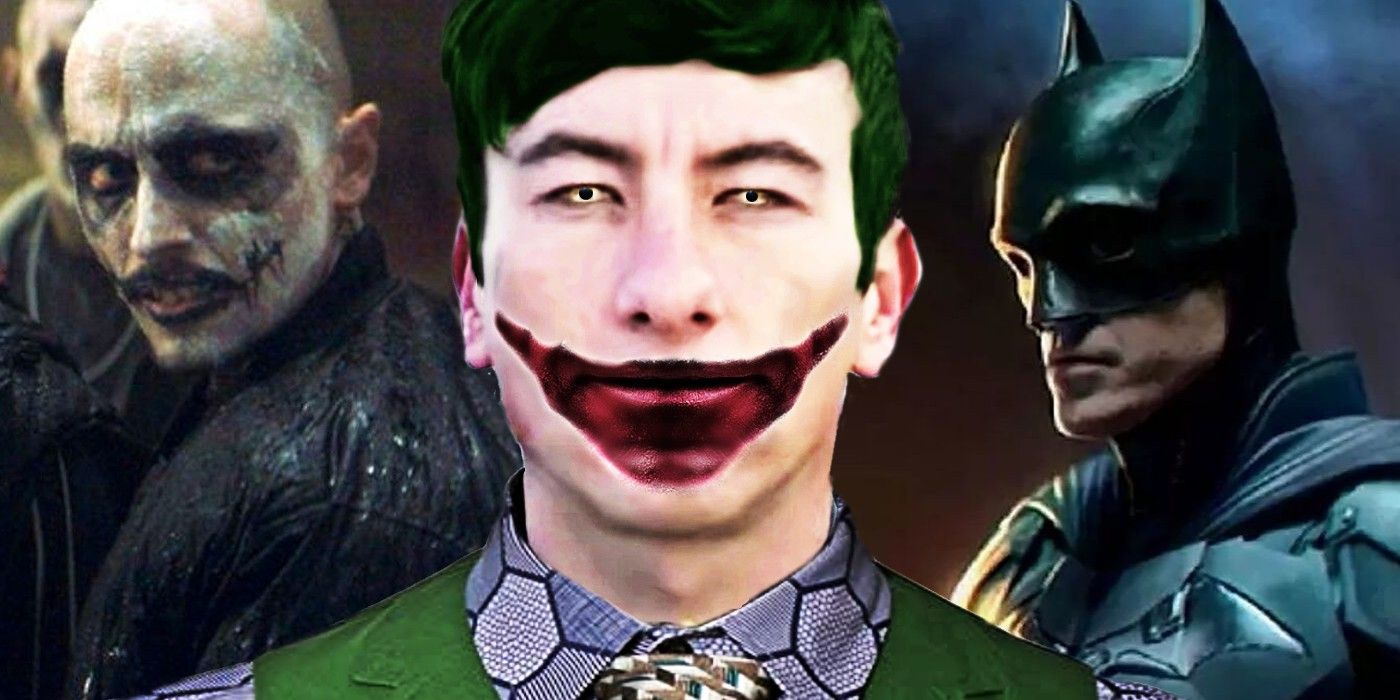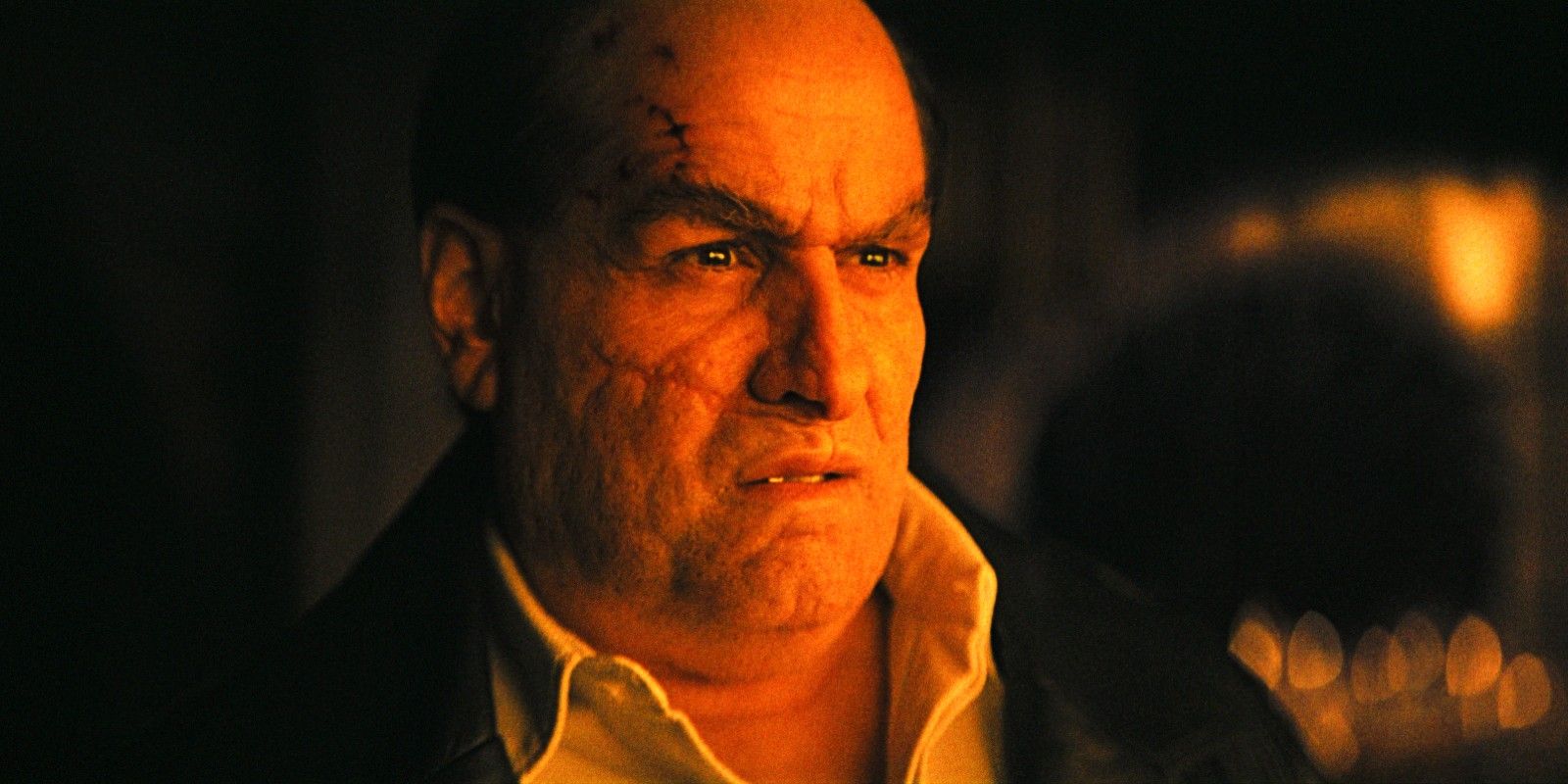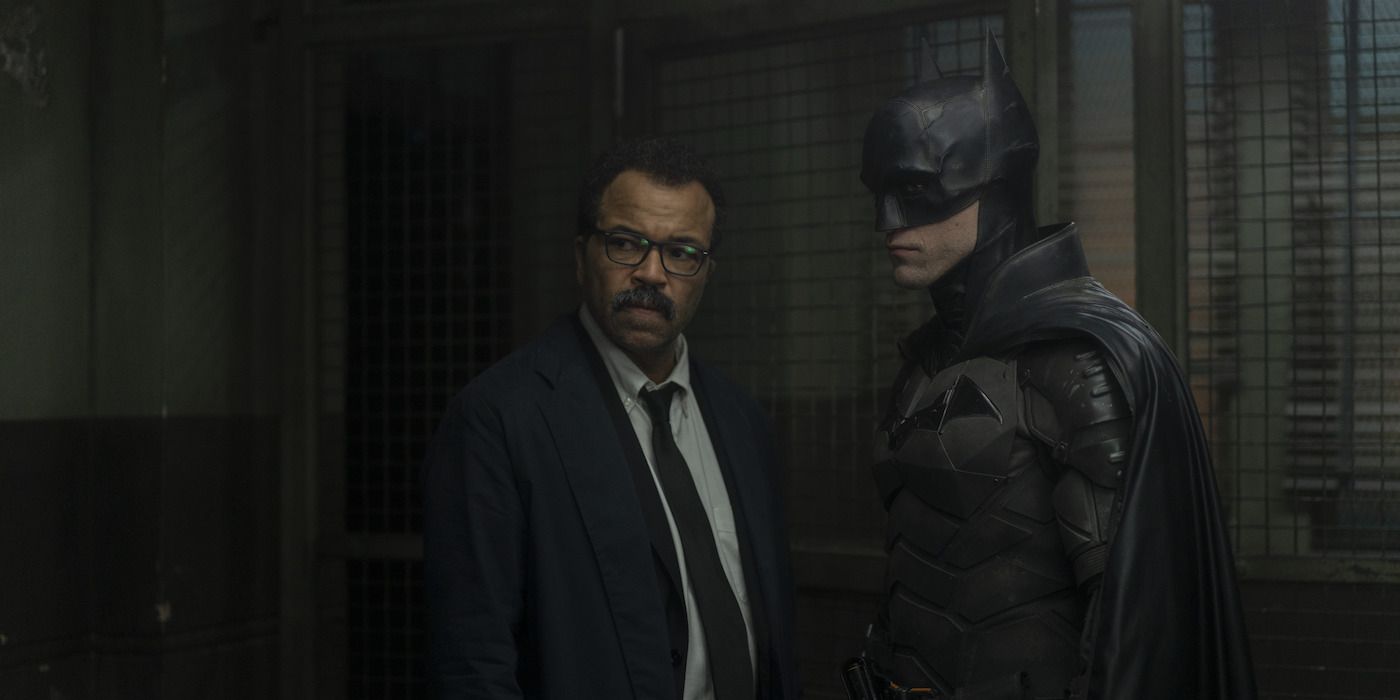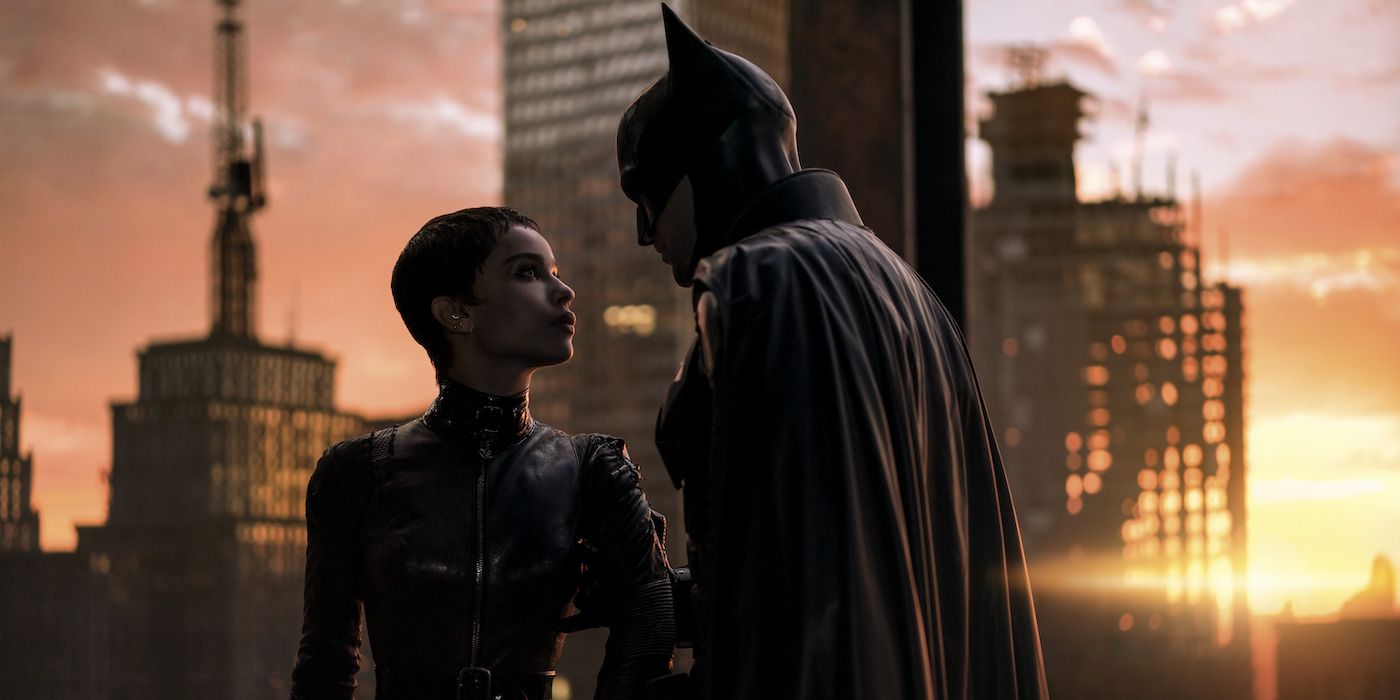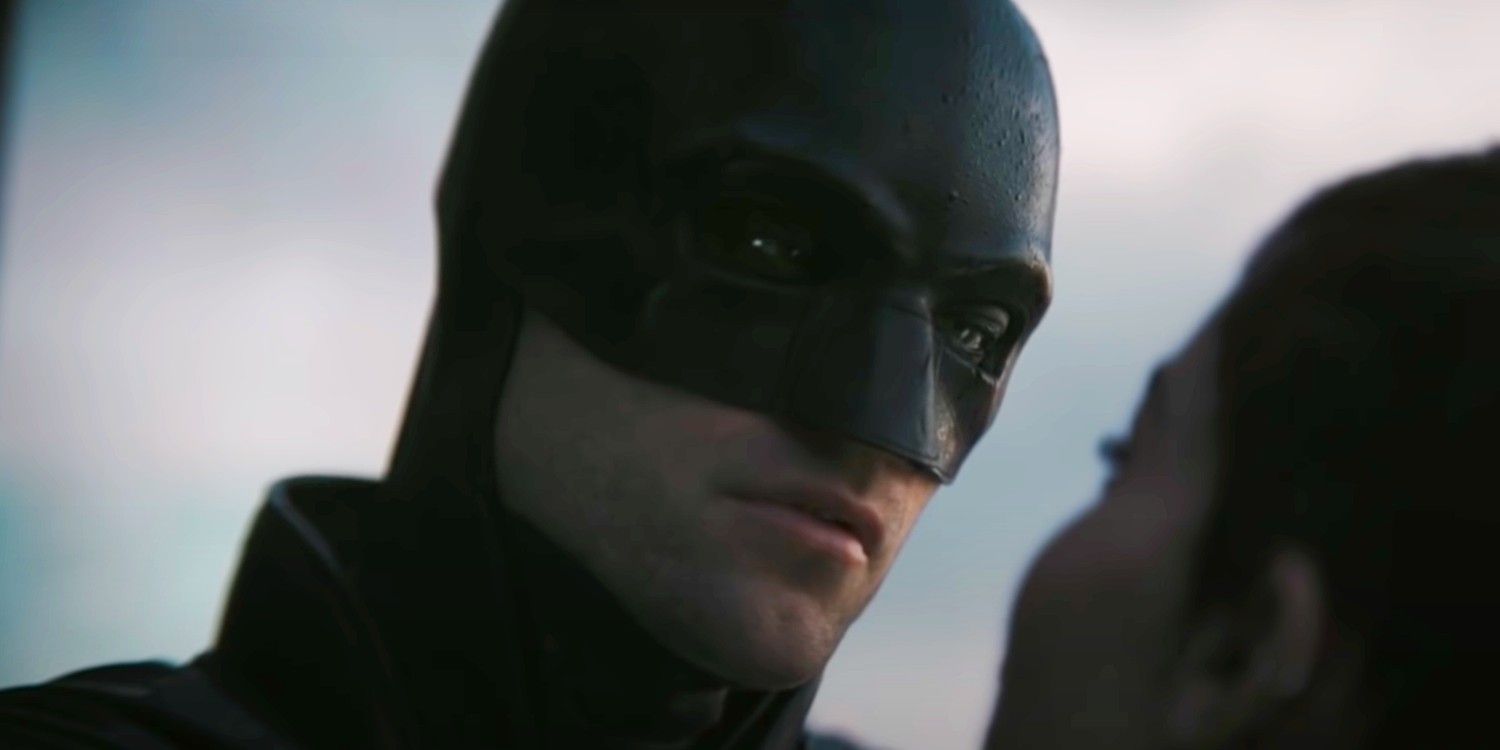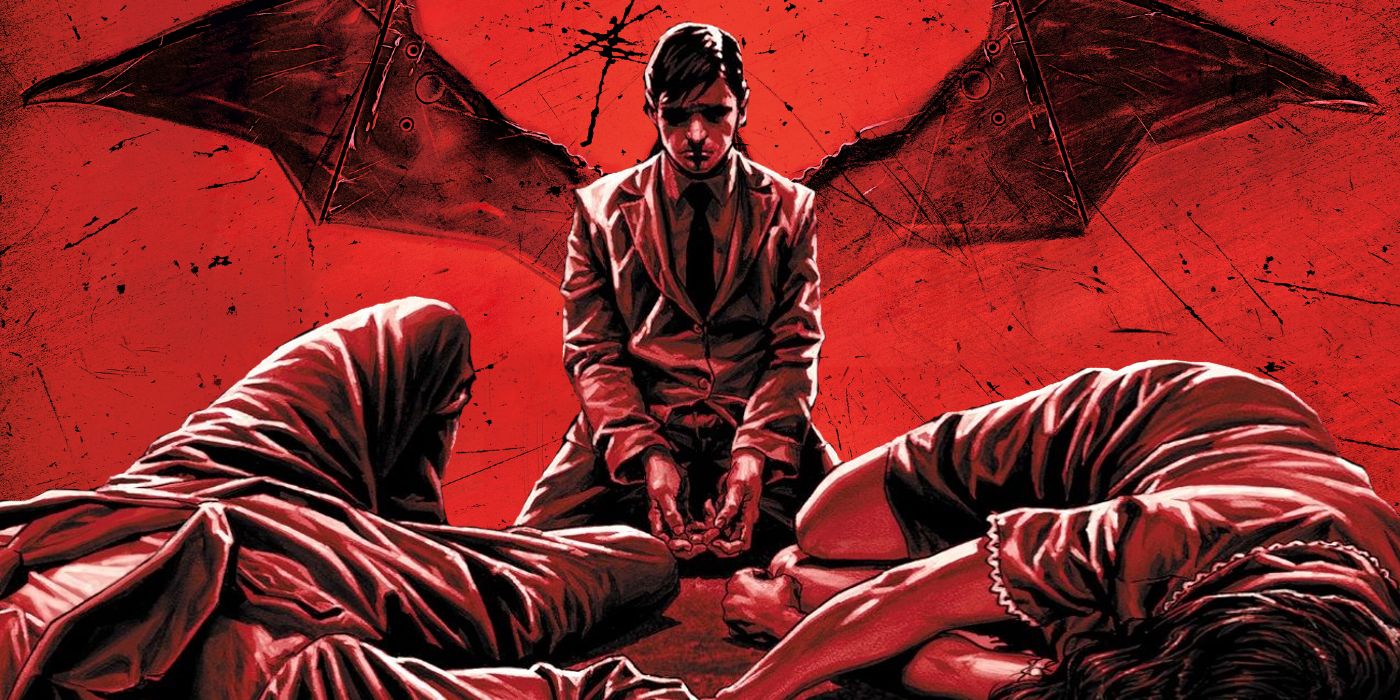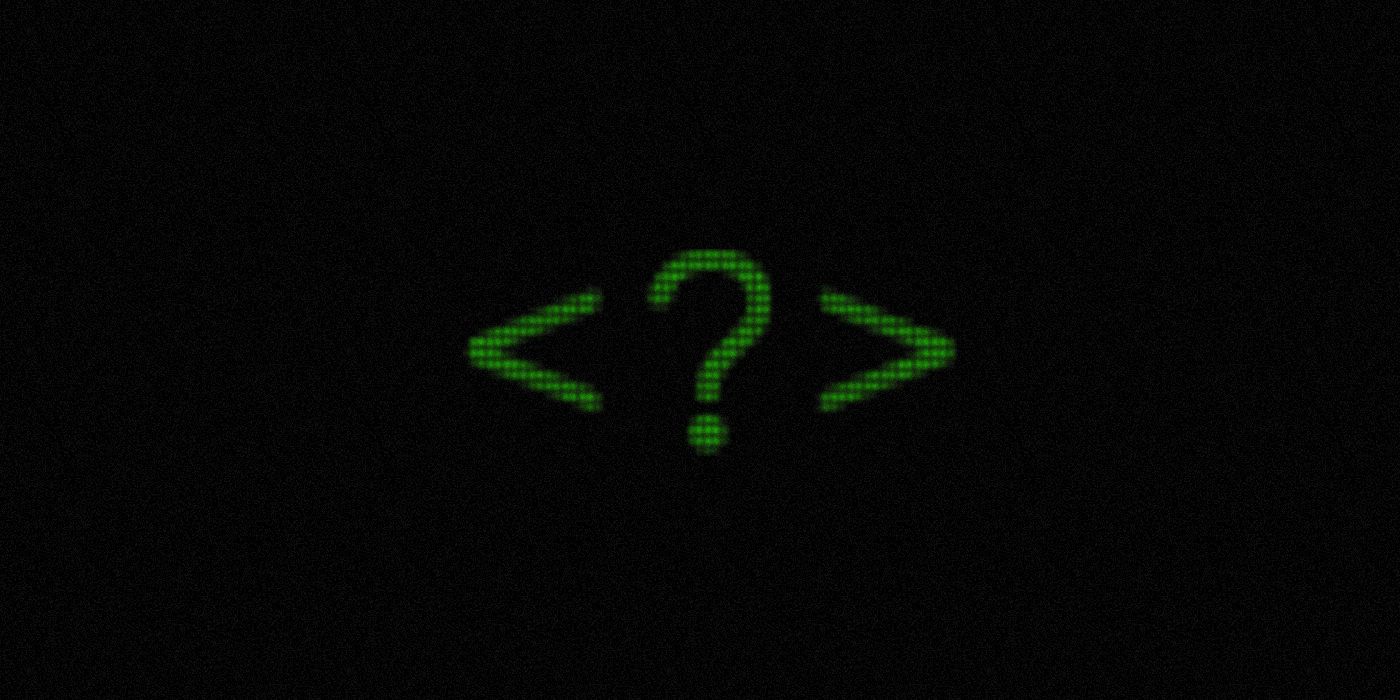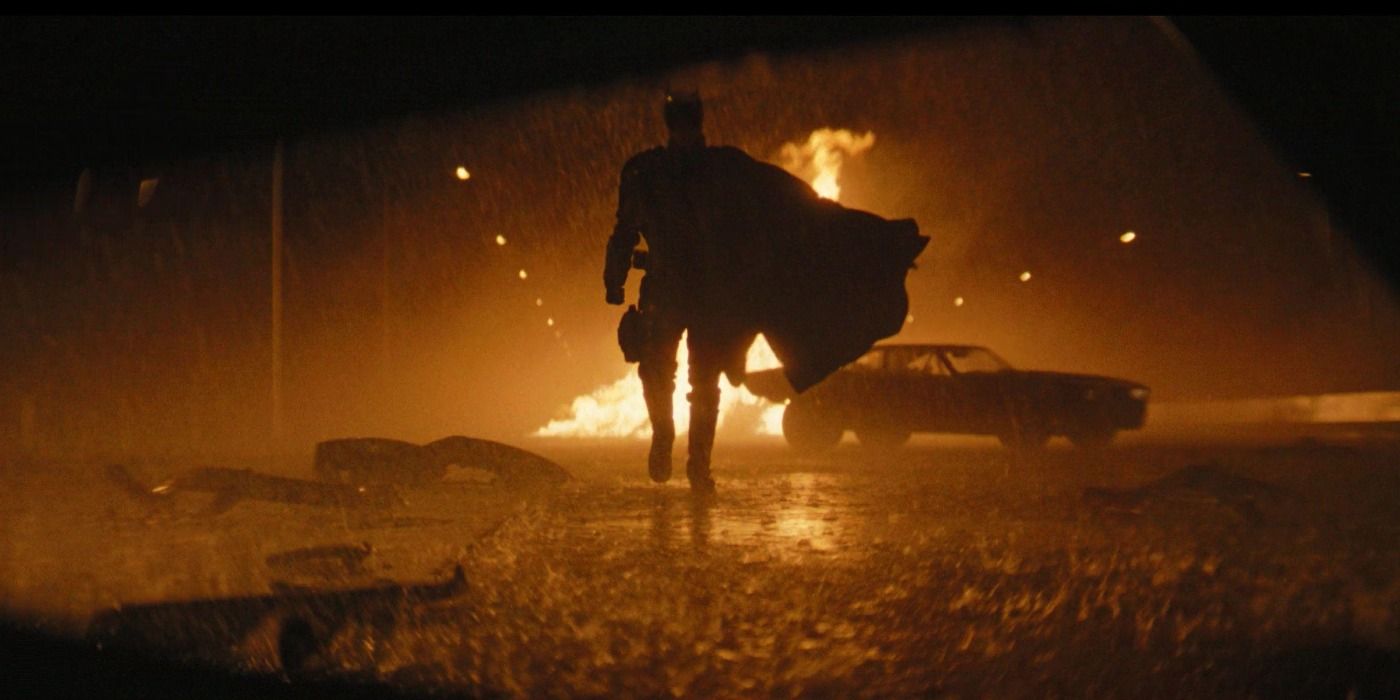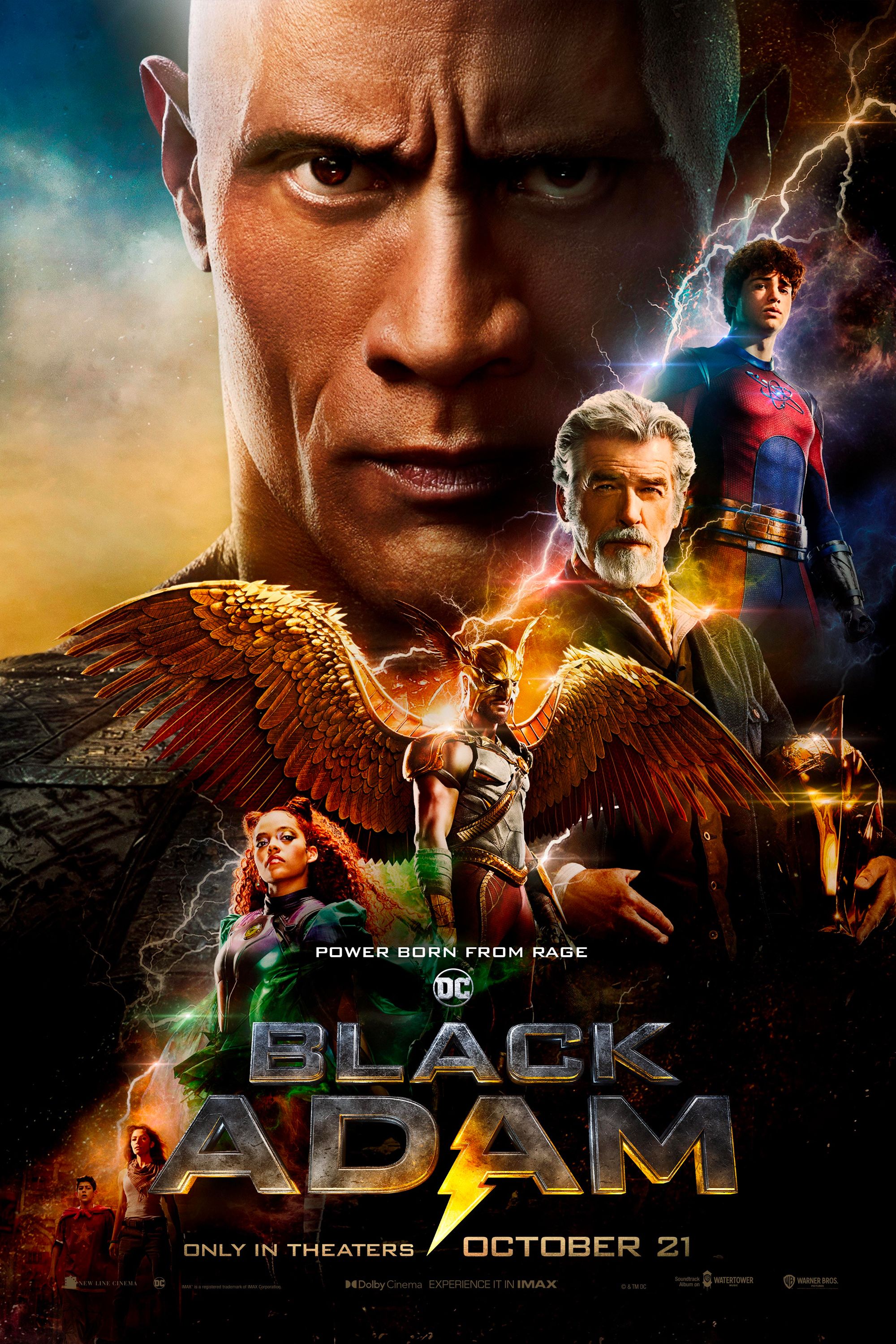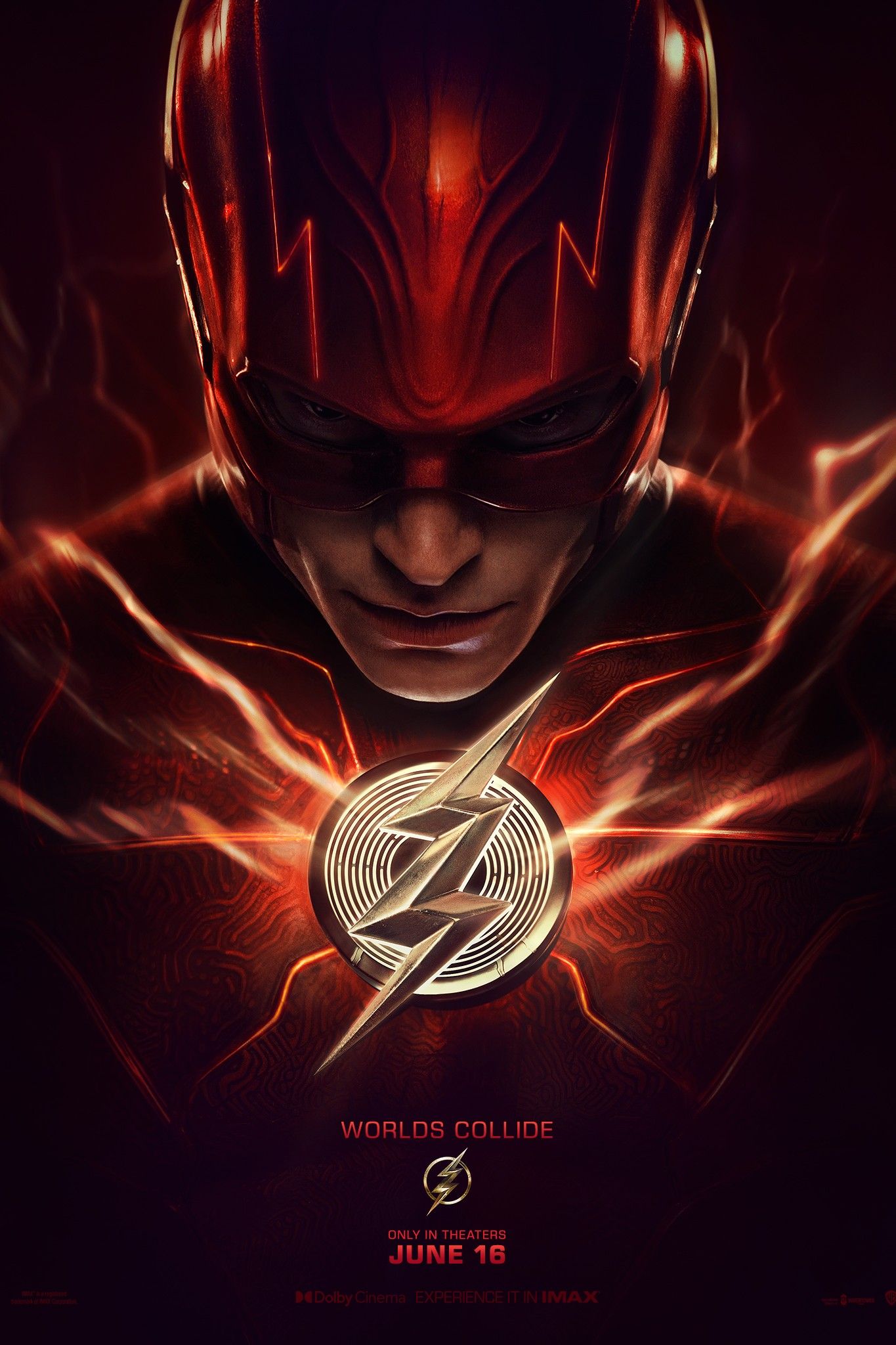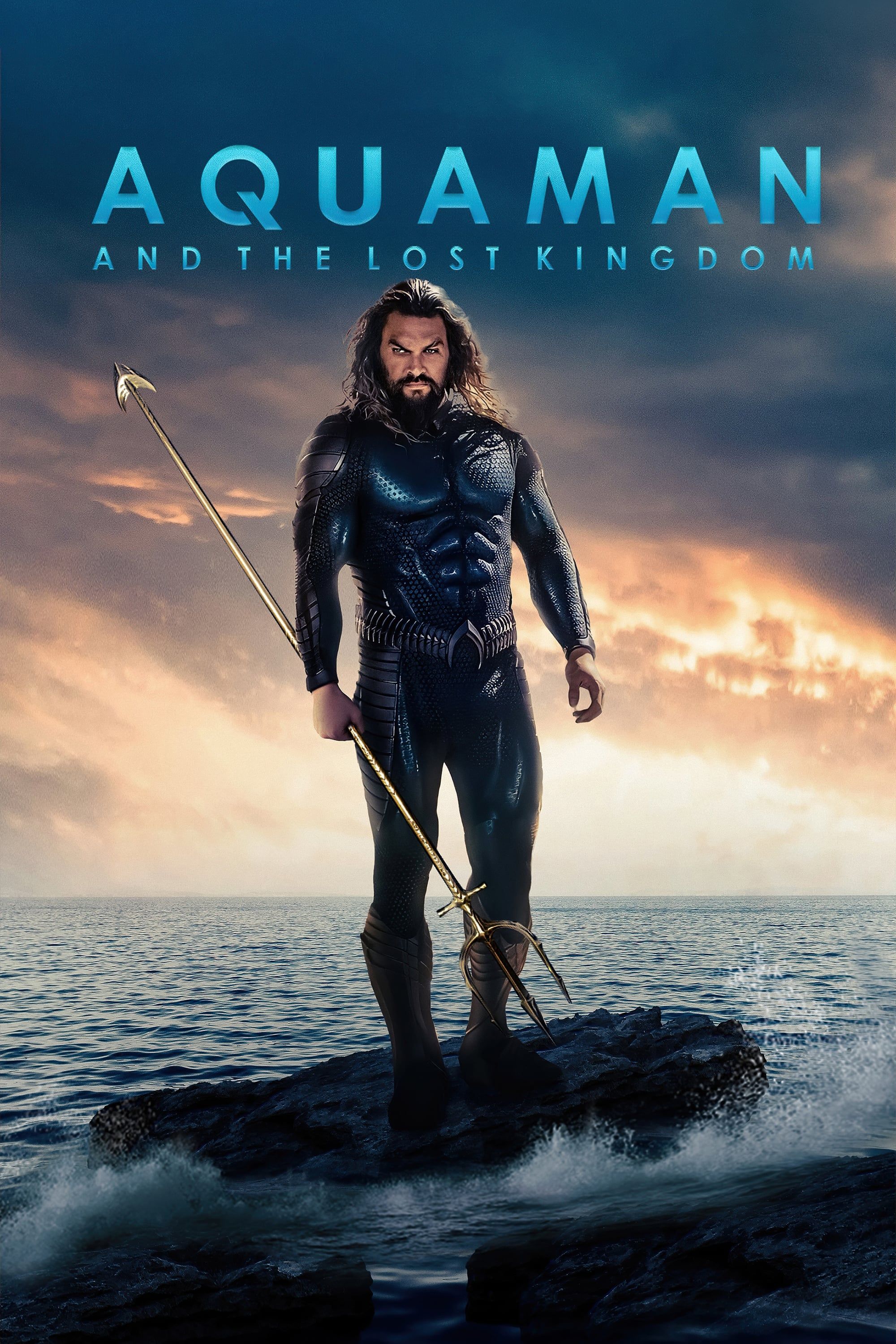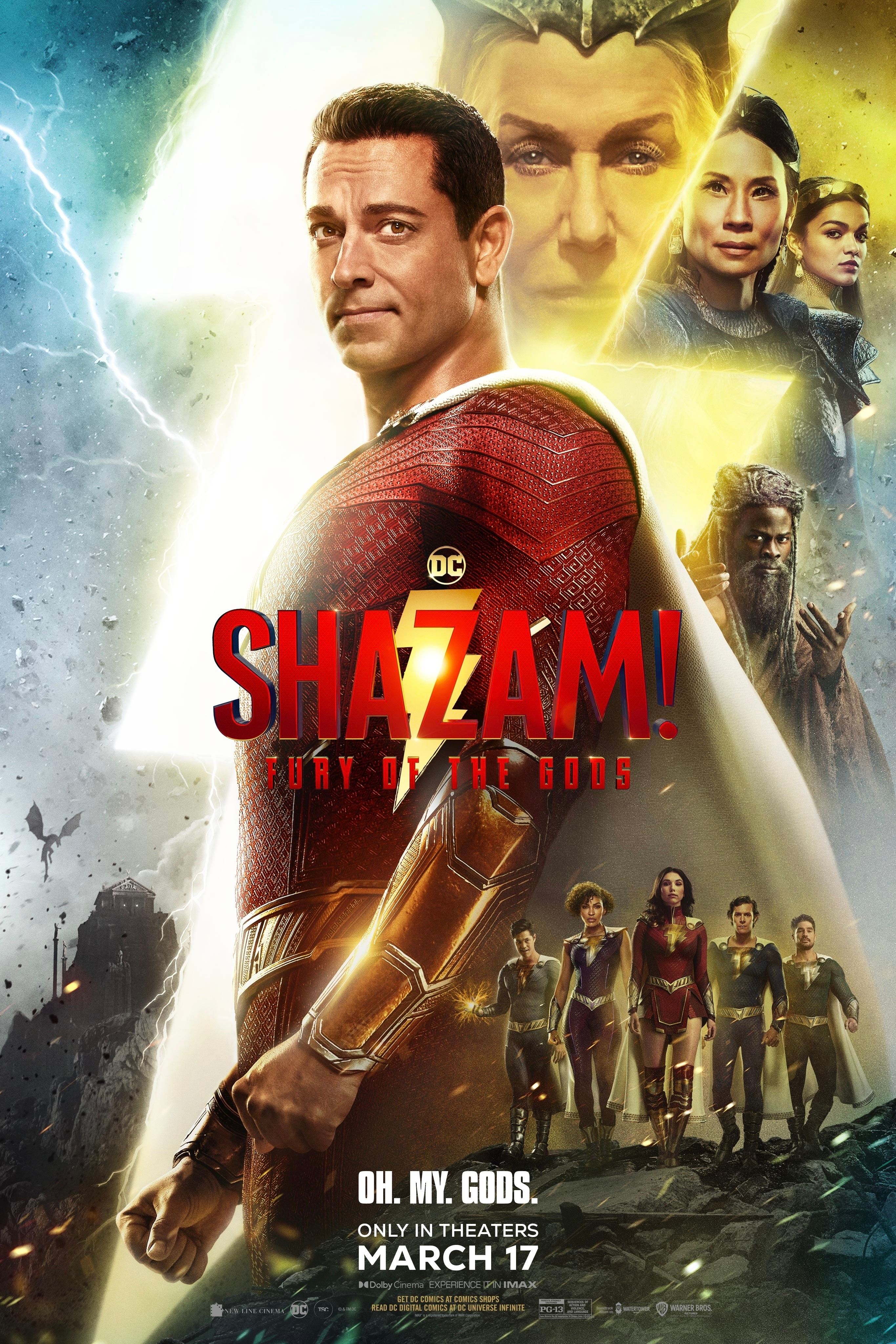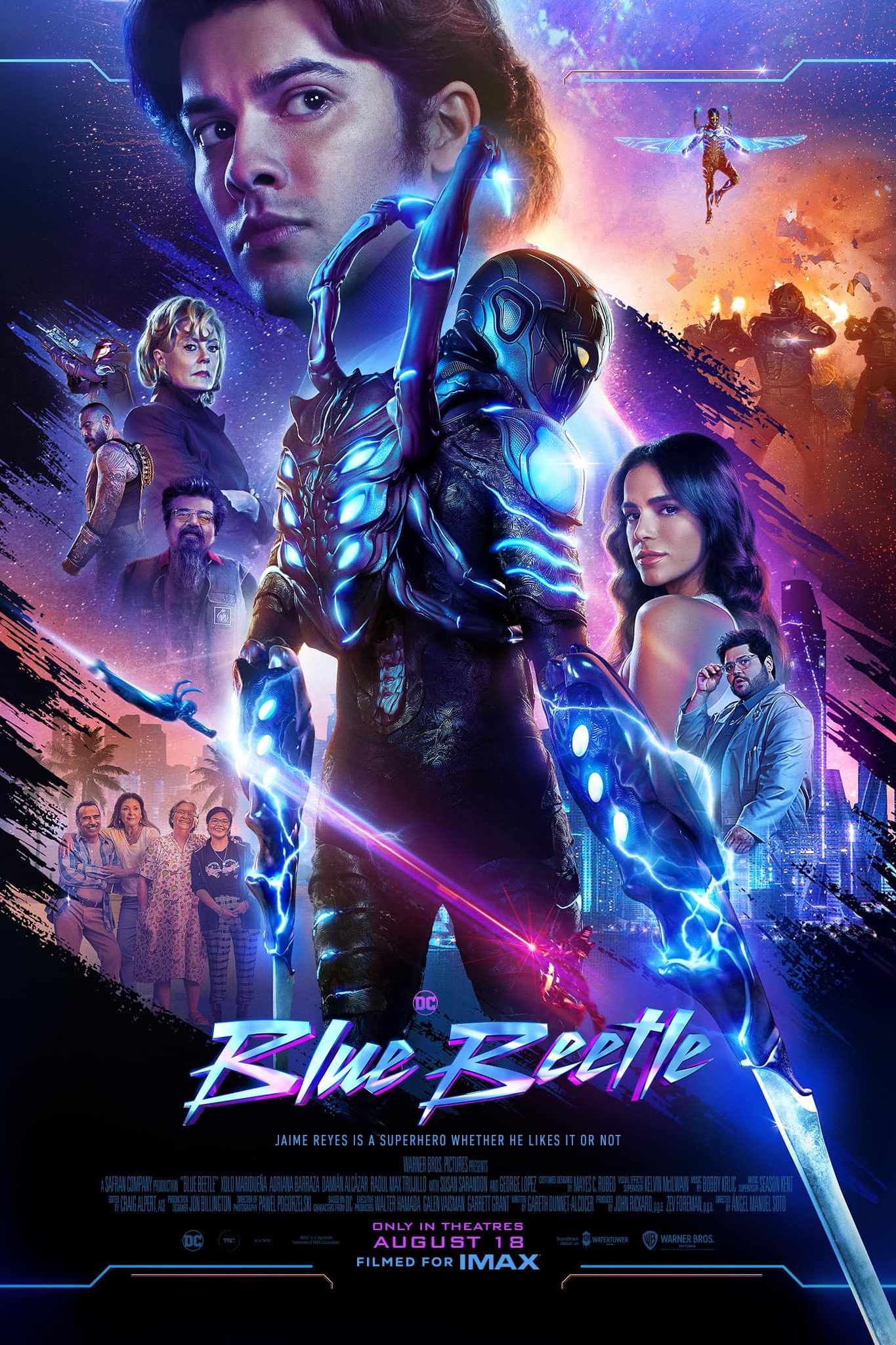Warning: SPOILERS for The Batman ending.
The Batman ending wraps up the first story in Matt Reeves and Robert Pattinson's new Batman universe, but the Dark Knight's journey is far from over. The long-awaited movie introduces a new Bruce Wayne/Batman onto the big screen after originally being set as a spinoff of Batman V Superman: Dawn of Justice and Justice League for Ben Affleck. Things changed in 2017, and The Batman became the origin of a new, separate universe, but one that's only getting started.
Seemingly set in the present day, The Batman follows Bruce Wayne in his second year of crime-fighting as Gotham City's Caped Crusader. With Alfred Pennyworth as his confidant and ally, Batman attempts to solve the mystery behind The Riddler's murders as well as figuring out how it all connects to his parents, Thomas and Martha Wayne. Of course, being relatively new at the job and not having gone up against villains like Riddler, Penguin, and Falcone before, Batman is a bit out of his depth. He's still learning, and the overall experience changes him forever.
Much of The Batman's ending is dedicated to laying the foundation for the hero's future, as well as the future of Gotham's police and criminal underworld. It's all rather straightforward, with little being left unresolved on a macro level. However, there are several smaller stories unfolding in The Batman's ending that could complicate Bruce Wayne's next adventure as the Dark Knight.
Click here to watch The Batman: Ending & Post-Credit Scene Explained on YouTube
The Riddler's Real Plan In The Batman
One of the biggest twists in The Batman is the reason behind The Riddler's murders. He was seemingly going after corrupt politicians and policemen, but the reasoning for them being corrupt wasn't revealed until later on. The Batman pushes the narrative that Riddler is just like the Dark Knight, but instead of both of them being vigilantes seeking to do good, they represent two sides of a coin — orphans seeking vengeance against Gotham, with each one executing their own form of justice.
The explanation for The Riddler's plan is fundamentally tied to Thomas Wayne and his goal to rebuild Gotham. As a kid, Edward Nashton was orphaned and grew up poor, ultimately becoming an accountant when he became an adult. It was because of his job that he discovered what happened with Renewal, the city's infrastructure rebuilding plan that was put into place by the Wayne family. After Thomas' death, the plan fell by the wayside, but rather than being dissolved completely, the money ended up being snatched up by Carmine Falcone. The crime lord took advantage of the opportunity; he used his knowledge of his rival's drug business to have Salvatore Maroni arrested, and then used the money to install a puppet regime in Gotham City, propping up everyone who became famous for Gotham's biggest drug bust.
Since Renewal was meant to benefit Edward, he took revenge against the people who wronged him indirectly, becoming The Riddler to combat injustice. His final victim would've been Bruce Wayne, another orphan whom he thought received undeserved attention following Thomas and Martha's deaths. People quickly forgot about the Renewal plan and focused entirely on Bruce Wayne, a boy who tragically lost his parents; meanwhile, all the other orphans in the city continued to suffer. In Riddler's eyes, Bruce was the catalyst for Renewal's downfall, while Falcone and everyone else represented the domino effect. The final piece in Riddler's retribution was destroying Gotham's walls and flooding the city, thereby forcing "real change" — washing away the corruption and beginning anew; a true renewal.
The Riddler Goon's Connection To Batman
The point of Batman having an effect on Gotham — whether it be good or bad — comes to fruition in the film's denouement, particularly after Jim Gordon restrains him from killing one of The Riddler's goons on top of the jumbotron. When the goon is unmasked, he looks at Batman and says, "I'm vengeance." His face may not seem too familiar, but he's the same guy Bruce Wayne encounters at the funeral earlier in the film, the one expressing discontent with Gotham's officials.
Him saying he's "vengeance" is a condemnation of Batman's crusade in Gotham, along with a testament to the city's villains. At the start of the movie, Batman fought a clown gang, presumably one inspired by Joker, and now another thug has latched onto Riddler, the city's latest supervillain. The thing is, as it becomes clear throughout the rest of the film, Batman hasn't stopped people from becoming criminals, because he hadn't accomplished anything that would combat the reason they turned to crime in the first place. And in an act of terror against the people of Gotham, the goon fought for his own vengeance, hence him appropriating Batman's words.
The Joker (Played By Barry Keoghan) Explained
A new Batman universe means a new Joker — it's inevitable. Thankfully, The Batman introduces Joker but also holds back just enough to keep viewers' interests piqued until a sequel arrives. In this version, Joker is in Arkham and he already has a clown gang, which means he's had his first reign of terror off-screen. In the comics (as well as other mediums), Joker is often imprisoned in Arkham following his bouts with Batman, which might be the case in The Batman movie, though it's unclear if Joker and Batman have fought in this universe. Regardless, The Batman promises more of Joker going forward, potentially in league with The Riddler as well. When the two of them meet, Joker offers his new, fellow inmate a riddle, "The less of them you have, the more one is worth." The answer being a friend, thus hinting at their future together as part of Batman's rogues gallery.
In The Batman, Joker is played by Barry Keoghan, an actor who many viewers will recognize from his recent stint as Druig in Marvel's Eternals. He's also appeared in The Green Knight, The Killing of a Sacred Deer, and Dunkirk, among other films and shows. While his face is predominantly concealed in the scene, viewers see bits of Joker's scars, which offer a glimpse at the Joker look The Batman's universe is going for. Furthermore, Joker's laugh is less of a bray or cackle and doesn't have a crescendo to it; rather, it's a hyena-like laugh that remains consistent throughout. Combining these various pieces of information, audiences can see deduce what Joker will be like when he appears in full, perhaps in The Batman 2.
The Penguin Takes Over From Falcone (Setting Up His Show)
One of The Batman's upcoming spinoff shows on HBO Max will be centered on The Penguin. Although his past with Carmine Falcone and Salvatore Maroni isn't detailed in the film, it's not necessary to the plot or to this burgeoning Gotham universe. So instead of being a prequel, it seems the spinoff series will be set in the aftermath of The Batman and Gotham's flooding. The Batman's ending heavily implies, through Penguin's actions as well as the mayor's voiceover, that the villain will become a new crime lord and fill the power vacuum left by Falcone. Crime must exist in Gotham for there to be a Batman, after all.
Presumably, Penguin's series will take inspiration from the comic story Batman: No Man's Land, in which Gotham suffers from a cataclysmic earthquake that leaves the city in shambles. In order to restore order and rebuild, most of the citizens are evacuated and the city left empty — becoming a no man's land. Of course, Batman's fiercest villains seize the opportunity to take over parts of Gotham and establish new territories, thereby leading to an all-out war between the Dark Knight and his rogues gallery. Part of that story can be adapted into Penguin's spinoff with Colin Farrell, showing what becomes of Gotham's criminal underworld in the aftermath of Falcone's death and the walls breaking down.
Gotham Is Flooded & Crime-Ridden (Setting Up The GCPD Show)
Building off The Penguin's show, as well as crime potentially becoming more rampant, is the Gotham PD series. HBO Max began developing the show back in 2020 and early details have indicated that the series will be set during the first year of Batman's crime-fighting career, with the it being a police procedural. That can work, of course, but since Jim Gordon is shocked by how corrupt Gotham PD is in The Batman, it doesn't fit within the context of the overarching narrative. Rather, it makes sense for the GCPD show to build upon the mayor's promise at the end of The Batman — to rebuild Gotham and make it better.
With Gotham PD's corruption mostly purged now, the police will have their work cut out for them curtailing a new wave of lawlessness. Going down this route will allow both the Penguin and GCPD series to explore the two sides of Gotham, showing the city's reconstruction without needing Batman there at the forefront. Then by the time The Batman 2 happens, Gotham will already be up-and-running. Even if the GCPD series does end up being a prequel to The Batman rather than a follow-up, it can use the opportunity to lay the groundwork for the Court of Owls so that the organization doesn't come out of left field in the sequel (or third film).
Catwoman Leaves For Bludhaven (Nightwing's City)
Similar to The Dark Knight Rises in which Catwoman asks Batman to come away with her and he refuses (though eventually retiring with her), Catwoman heads off in her own direction in The Batman ending after asking Batman to leave Gotham behind. Her leaving isn't the most intriguing part of the scene, because she can always come back in The Batman 2 should the story require her. Rather, it's the fact that she namedrops Bludhaven as the city she's going to. In the comics, Bludhaven is where Dick Grayson goes when he strikes out on his own and becomes Nightwing, leaving his identity as Robin and Batman's sidekick behind.
It's unlikely Nightwing exists yet because he would need to be Robin first, and Bruce Wayne has only been Batman for two years. Considering the film ends on a hopeful note, with Batman opening himself up to the people of Gotham and stepping into the light, not to mention Bruce Wayne coming to terms with Alfred Pennyworth and his family, it's possible The Batman 2 could introduce a young Dick Grayson. The seeds have been planted for the story to happen. Catwoman mentioning Bludhaven was merely an easy way to get that storyline at the front of fans' minds, because it's not like Bludhaven can't exist without Nightwing.
Of course, the question is, what if, in this Batman universe, Nightwing already exists separately from Batman? The Batman included several bits of information that changed the Batman mythos (Catwoman being Falcone' daughter, for one), so it wouldn't be far-fetched for Nightwing to have a new origin as well. After all, if the Court of Owls story does happen in The Batman 2, Nightwing should be a part of it, given his ties to that group in the comics.
What The Batman's Final Shot Means
What stops Batman from leaving with Catwoman is him seeing the Batsignal up in the sky. It may not have been the ultimate deciding factor, but it represented an acknowledgment of his crusade, which Catwoman fully understood. It's why they part ways once they leave the cemetery, and Batman looks back at her through his bike's side mirror. She helped changed him without knowing it. She was partly responsible for opening him up and helping him see the error of his ways. At this point in the story, he's no longer "vengeance"; he's something more, something better, and she was one of the many people who nudged him in that direction. But in the very next moment — in the final shot of The Batman - he fully dedicates himself to being a new Batman to Gotham City. Rather than looking at Riddler's actions as a fundamental failure on his part, he sees it merely as a consequence that needs to be rectified. The final scene in which he sees Catwoman disappear into the mist and then looks forward is reminiscent of The Dark Knight's ending, in which Batman disappears into the night on a bike. However, instead of disappearing for several years as Christian Bale's Batman did, Robert Pattinson's Batman prepares himself to continue his journey. The scene is a promise of more to come, akin to Batman Begins' ending when Batman flies off the GCPD roof.
Who Killed Batman's Parents?
Thomas and Martha Wayne's murders have always been a focal point of Batman's origin story, but The Batman takes a different approach. The film doesn't dwell on the fact that their deaths inspired him to become a vigilante, nor does it show their deaths outright. Instead, the mystery behind who killed them (and who ordered their murders) becomes a subplot as The Riddler's puzzle unfolds. Typically, Joe Chill is the person who kills Bruce Wayne's parents in the comics and most stories, like in Batman Begins. But in The Batman, the Wayne murders can be attributed to two people: Carmine Falcone and Salvatore Maroni.
Both men were Gotham's biggest crime bosses, but Falcone had a closer relationship with Thomas Wayne. So when Thomas came to Falcone and asked him to take care of a reporter, Falcone had the reporter murdered and presumably would have used that information to blackmail Thomas. Depending on the perspective, it's possible Maroni had Thomas Wayne (and Martha) killed in order to prevent Falcone from controlling the Waynes; however, because Thomas threatened to go to the police, it's also possible that Falcone had Bruce's parents murdered so that he could avoid potential jail time. Ultimately, the mystery goes unresolved in the film, but it stands to reason that Falcone had the Waynes killed; the fact that he schemed to control Gotham's elites after taking Maroni out of the equation shows that he's someone with the power and know-how to make it work — and he's not afraid to get his own hands dirty from time to time.
The Riddler's Post-Credits Message Explained
The Batman eschews a traditional post-credits scene in favor of a final message from The Riddler. At the very end of The Batman credits, a message appears on-screen telling audiences "Goodbye," but before the screen goes black, an image flashes for a brief moment. It may be tough to catch what the message says, but it's Riddler's website from earlier in the film: Rata Alada. It's a fun tie-in website that allows viewers to try their hands at three riddles, with a reward being given if all the riddles are answered correctly. The riddles and rewards have changed a few times already, so it's possible they could change again. Interestingly, this isn't the first time that a Batman project has done something like this. Back in 1966, a Los Angeles radio station worked with 20th Century Fox to run a promotion that rewarded someone with lunch on the studio's lot with Batman and Robin themselves if the person correctly guessed the Batphone's number.
The Batman's Real Meaning Explained
Throughout The Batman, Bruce Wayne seeks revenge for his parents' murders as well as for the general corruption of Gotham City, but the story flips it on him. Batman has rules — he doesn't use guns and he doesn't kill — but overall, that's all that really separates him from The Riddler, who also fancies himself a vigilante seeking retribution. Like Bruce, Edward Nashton was an orphan, but whereas he was forced to live in an underfunded orphanage in which babies died every winter, Bruce Wayne grew up rich in Wayne Tower. And to top it off, Bruce did nothing to help the city, which Gotham's new mayor accuses him of quite directly. For most of the film, the underlying theme is vengeance, because both Batman and Riddler pursue revenge against the city that wronged them — but they were wronged in different ways.
For Bruce, Gotham and its corrupt politicians, cops, and criminals needed to pay for his parents' murders — and whether it was his true intention or not, Bruce sought to fulfill his father's legacy because Thomas couldn't — while Riddler wanted the same people to pay for failing him, personally, after he was made an orphan — not before, as was the case for Bruce. That grim sense of futility that both of them felt as orphans drove them to become who they are in The Batman. But because of Riddler's actions and accusations against Bruce Wayne as a person, Batman turns from vengeance to hope. It's why he physically and metaphorically reaches out to Gotham's mayor inside the arena — not only to save and protect her, but also to be a guiding light to the people of Gotham, a true beacon of hope.
At the start of the movie, the Batsignal instilled fear in criminals, and while that's still the case by the end, it's now also had an impact on everyone else. Batman truly did have an effect on the city, one that his parents could be proud of. And by the time the credits roll, there's a profound acceptance of renewal. Bruce Wayne is transformed from a recluse hiding behind a mask — his true face — to someone who can become a man his father wanted him to be (and someone who would no longer avoid the people closest to him); and Batman is transformed from a symbol of fear and vengeance to a symbol of faith and hope. Ultimately, it all boils down to renewal, for Gotham, Bruce Wayne, and Batman.

